Ontario - Ottawa
Ottawa, 09.25.2018
Well today we are jumping right into the tourist role and taking in all the sights that Ottawa has to offer. First thing we headed down to a 90 Wellington Road to pick up our tickets for a tour of the Parliament building. Rick found a parking spot right across the street, without a sign for no parking, nor payment required. What a gem.. 4 parking spots in downtown Ottawa that are unlimited and free.
The Centre Block guided tours discover the history, functions and art of Canada’s Parliament. The Centre Block is the main building of the Canadian parliamentary complex on Parliament Hill, containing the

House of Commons and Senate chambers, as well as the offices of a number of members of parliament, senators, and senior administration for both legislative houses. It is also the location of several ceremonial spaces, such as the Hall of Honour, the Memorial Chamber, and Confederation Hall. Our tour today encompassed the Library, the Confederation Hall, the Centre Block, The Senate Chamber and the Peace Tower. The Government was in session in the House of Commons Chamber, so we were only able to go view the session and not tour the room officially. I think my favourite space was the Library - simply spectacular!
Built in the Gothic Revival style, the present Centre Block is the building's second iteration. The first was destroyed by fire in 1916; all that remains of the original building is the Library of Parliament, at the rear of the Centre Block. Though construction began immediately
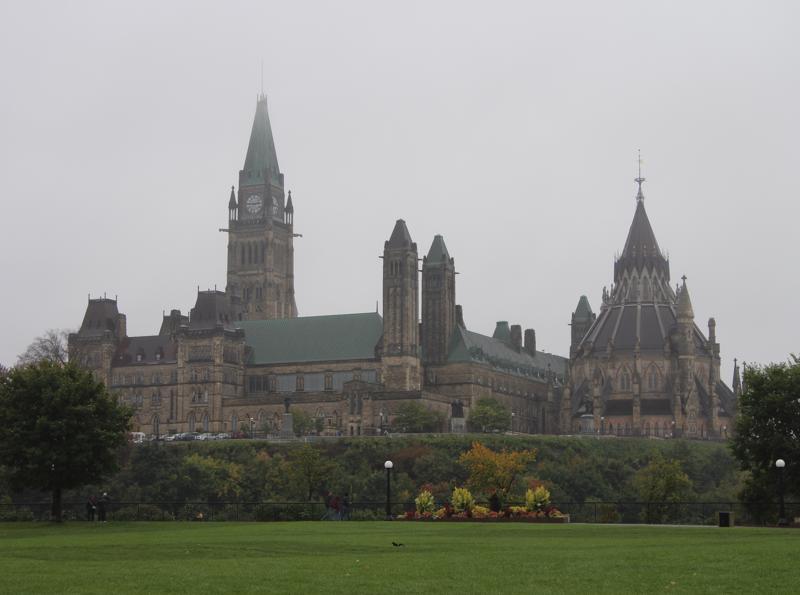
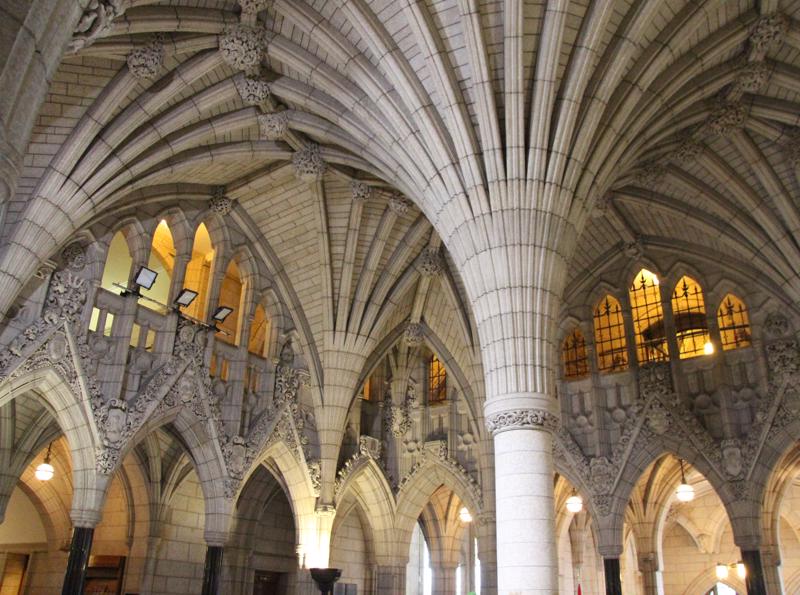
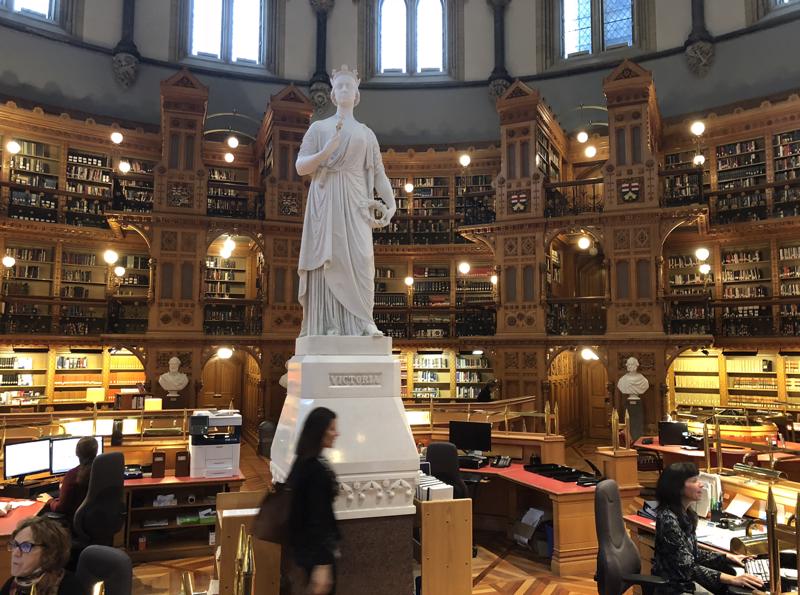
after the blaze, sculpting work on the interior continued through the 1970s. One of the most recognizable buildings in Canada, the Centre Block is depicted on the Canadian $10 bill (the Library of Parliament), $20 bill (the Peace Tower), and the $50 bill.
The Centre Block is arranged symmetrically around Confederation Hall, located immediately inside the main entrance. It is an octagonal chamber, the perimeter of which is divided by limestone clustered columns into eight bays of two different sizes, themselves subdivided by dark green syenite pillars. Behind these runs a vaulted ambulatory that supports the upper gallery. The arcaded arches are topped by gables sculpted to commemorate the confederated nature of Canada and they support one side of the hall's fan vaulted ceiling with carved bosses, while the other side rests on a single column in the centre of the room.
Extending from Confederation Hall is the Centre Block's north to south axis, running between the Library of Parliament and the Peace Tower, through the Hall of Honour, which serves as the route of the parades for both speakers of parliament, as well as, where the lying in state segment of some state funerals takes place. It is a long, rib vaulted space of Tyndall limestone divided into five bays by superimposed double arcades of lancet arches atop clustered
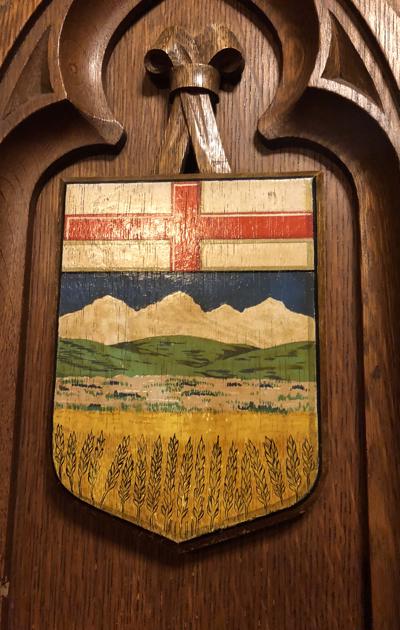
columns on pedestals.
In Centre Block's east wing is the Senate chamber, in which are the thrones for the Canadian monarch and her consort, or for the federal viceroy and his or her consort, and from which the sovereign or the governor general gives the Speech from the Throne and grants Royal Assent to bills passed by parliament. The senators in the chamber who belong to the governing party sit to the Speaker of the Senate's right and the opposition sit to the speaker's left.
The Senate chamber's overall colour is red. The carpeting and draperies reflect the colour scheme of the House of Lords in the United Kingdom; red was a more royal colour, associated with the Crown and hereditary peers. Capping the room is a gilt ceiling with deep octagonal coffers, each filled with heraldic symbols, including
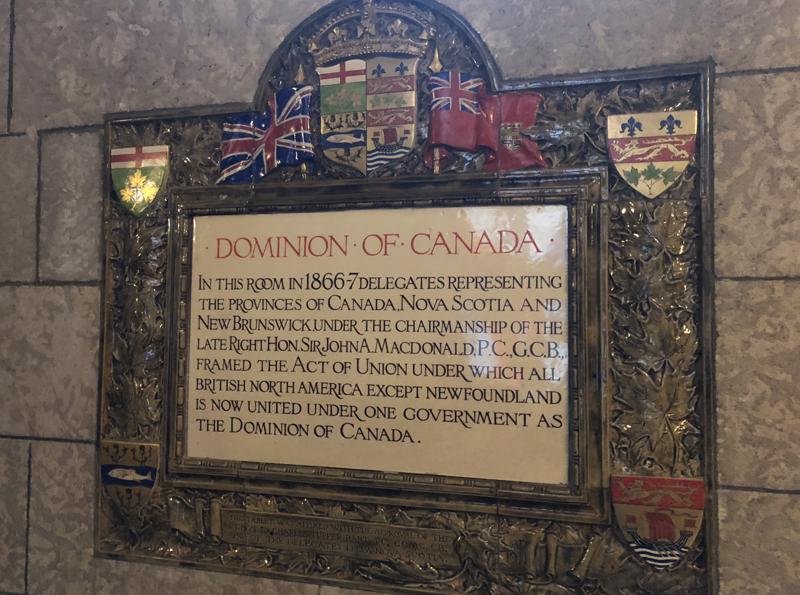
maple leaves, fleurs-de-lis, lions rampant, clàrsach, Welsh Dragons, and lions passant. This plane rests on six pairs and four single pilasters, each of which is capped by a caryatid, and between which are clerestory windows. Below the windows is a continuous architrave, broken only by baldachins at the base of each of the above pilasters.
The building's western wing contains the House of Commons chamber, along with its antechamber and lobbies for the government and opposition, on the east and west sides of the main commons space. The doors to all are of white oak trimmed with hand-wrought iron.
The chamber is 21 metres long, 16 metres wide, and has seats for 320 members of parliament and 580 persons in the upper gallery that runs around the room's second level. The overall colour scheme is in
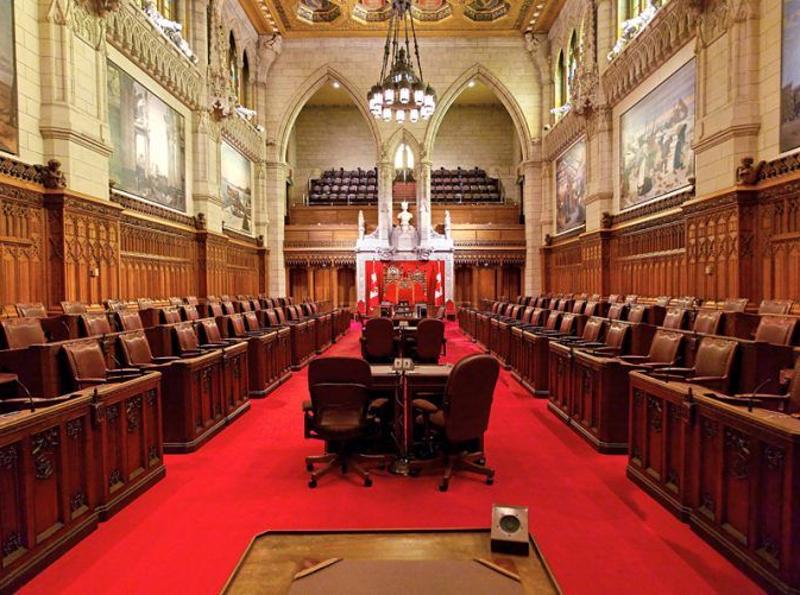
green—visible in the carpeting, bench upholstery, draperies, paint within the gilded honeycomb cork plaster work of the cove, and the stretched linen canvas over the ceiling—and is reflective of the colour used in the House of Commons of the United Kingdom since at least 1663.
Before heading to our next tour stop we headed over to 90 Wellington for a snapshot of the Terry Fox Statue. His legacy continues to inspire people from around the world. After our visit on Parliament Hill we wandered over to the Royal Canadian Mint to jump in on a tour of the mint at 11:30.
On January 2, 1908, Governor General Earl Grey activated the press to strike the Dominion's first domestically produced coin, a fifty-cent piece. As an audience of dignitaries looked on, the Countess Grey
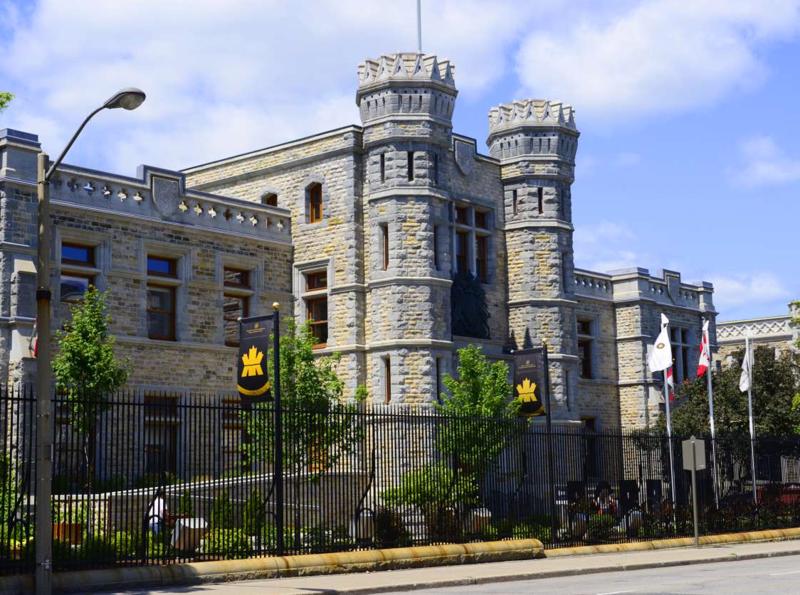
closed the ceremony by striking Canada's first bronze cent. The Ottawa branch of Britain's Royal Mint was officially open for business.
In 1931, the heritage building on Sussex Drive, the surrounding land and the entire minting enterprise passed into Canadian hands, making the Mint a wholly Canadian institution. The creation of the Royal Mint coincided with an era of burgeoning gold production in the Yukon and British Columbia. A refinery was needed to perform the complex work of bringing rough gold up to coinage standards.
The Canadian Mint's original refinery was completed in 1911. It rendered distinguished service to the British Empire throughout the Great War, producing the large quantities of gold bars with which Britain paid its debts to other countries.
A new refinery facility, designed to meet any possible demand for many years to come, was built in 1936 to refine gold for mines and central banks throughout the world. Still in operation today, the refinery has produced 9999 fine gold bars since 1969. In 1982, it became the world's first refinery to produce 9999 fine gold bullion coins. Then in 1999, the Mint excelled again by being the first to achieve 99999 fine gold purity.
The Royal Canadian's Mint Ottawa headquarters and Winnipeg manufacturing plant form one of the world's most sophisticated minting operations, equipped with incredibly advanced coin production technologies. They lead the global minting industry in blank burnishing and blank polishing, two advanced technologies that were perfected by their in-house research and development team.
Their engineers also innovate by identifying new, previously discovered uses for applications, procedures and even machines.
They use multi-ply plated steel, which is more secure and less costly
Since 2000, the Canadian government has saved millions of dollars thanks to multi-ply plated steel. Our customers throughout the world also benefit from the Mint's advanced technology.
The Royal Canadian Mint in Ottawa now only produces collector coins, investment coins and speciality medals; such as, the Olympic Medals. The manufacturing plant is no longer large enough to produce circulation coins. As a result, a coin circulation manufacturing plant was built in Winnepeg, Manitoba. The Royal Canadian Mint not only procures Canadian circulation coins, but many other world currencies. They have produced 85 country coins over the years, with Bahamas being the longest standing client since

1971.
Did you know that the rim on a coin has a is not just for show? This is the part which exceeds the area of the die which strikes the coin during production, and as a result is pushed upward and sharpened to form a sort of border around the coin's design.
1. The raised rim reduces wear on the face of the coin.
2. For accessibility purposes, the rim of the coin is sometimes milled with certain patterns in order for the blind to more easily distinguish between coins.
3. Decreases the ability for counterfeit production
What a fascinating place to visit. The display of the 2010 Vancouver Olympic Medals was very interesting. When all the medals are place together they form a type of puzzle that patterns an Aboriginal Design of an Orca, making each medal one-of-a-kind. The impression on the front is created by laser etching. Pretty amazing piece of artwork.
After a busy morning exploring and playing tourist we decided to head over for lunch in the Byward Market. We stopped at a place we passed by yesterday and thought it would be a good place to come back to - Le Mein Craft Noodle. It is a small little place that seems to be packed every time we walk past. You can stand at the window and watch the guys hand make and pull the noodles for the simple dishes they serve. There is only about 4 items on the menu, most of them soup based. We shared a medium beef noodle soup for about $14.00. It was fantastic.
As you make your way back towards Parliament Hill a stroll through Major Hill's Park takes you behind the Fairmont Chateau Laurier. It's Tudor Gothic Style is breathtaking. It is similar to the Banff Springs hotel in it's design, both inside and out.
Beside the Chateau Laurier is the Rideau Canal. The Rideau Canal is an engineering masterpiece and one of Canada's strongest links to the past. It's planning after the war of 1812 as a means of safely transporting troops and equipment between Montreal and Kingston.
The Rideau Canal, also known unofficially as the Rideau Waterway, connects Canada's capital city of Ottawa to Lake Ontario and the Saint Lawrence River at Kingston, Ontario. It is 202 kilometres in length. The name Rideau, French for "curtain", is derived from the curtain-like appearance of the Rideau River's twin waterfalls where they join the Ottawa River. The canal system uses sections of two rivers, the Rideau and the Cataraqui, as well as several lakes. The
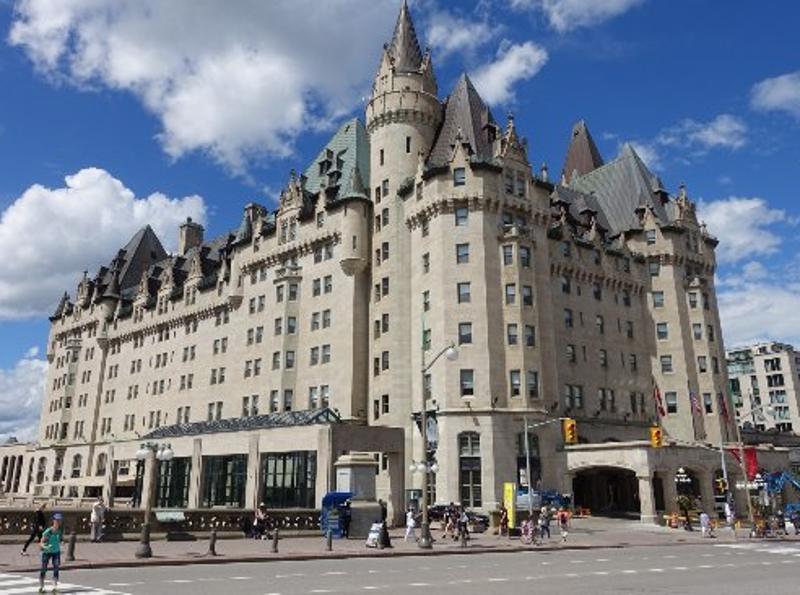
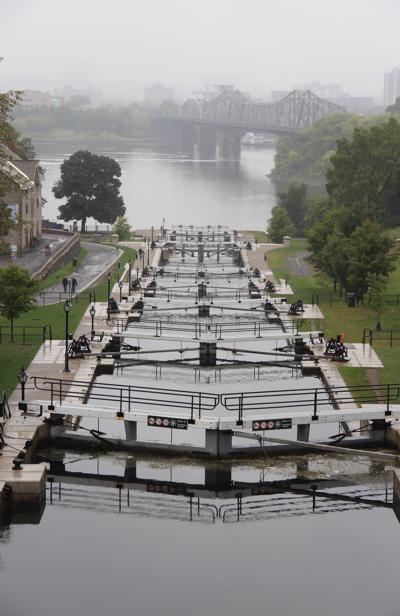
Rideau Canal is operated by Parks Canada as a Unesco World Heritage Site.
The Rideau Canal uses a lock system that is still fully functioning. The gates that let boats travel in and out of the locks last approximately 12–15 years. When the canal was originally constructed, the gates would be made at the lock sites by carpenters and blacksmiths. Today they are made in Smiths Falls, Ontario, and sometimes take up to 2 months to build 1 set of gates. The gates used on the Rideau Canal are made of Douglas Fir and are mitre-shaped to ensure a tight seal due to water pressure. The average Rideau Canal lock lift uses 1.3 million litres (1,300 m3; 1,700 cu yd) of water.
The last stop on our tourist day was at the National Gallery of Canada.
The Gallery has a large and varied collection of paintings, drawings, sculpture and photographs. Although its focus is on Canadian art, it holds works by many noted American and European artists. It has a strong contemporary art collection with some of Andy Warhol's most famous works.
In 2005, a sculpture of a giant spider, Louise Bourgeois's Maman, was installed in the plaza in front of the Gallery. In 2011 the gallery installed Canadian sculptor Joe Fafard's Running Horses next to the

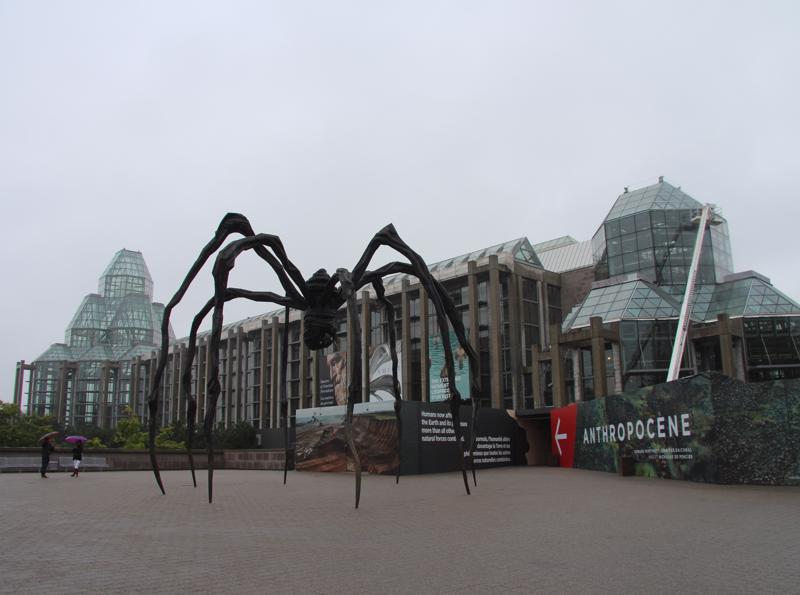
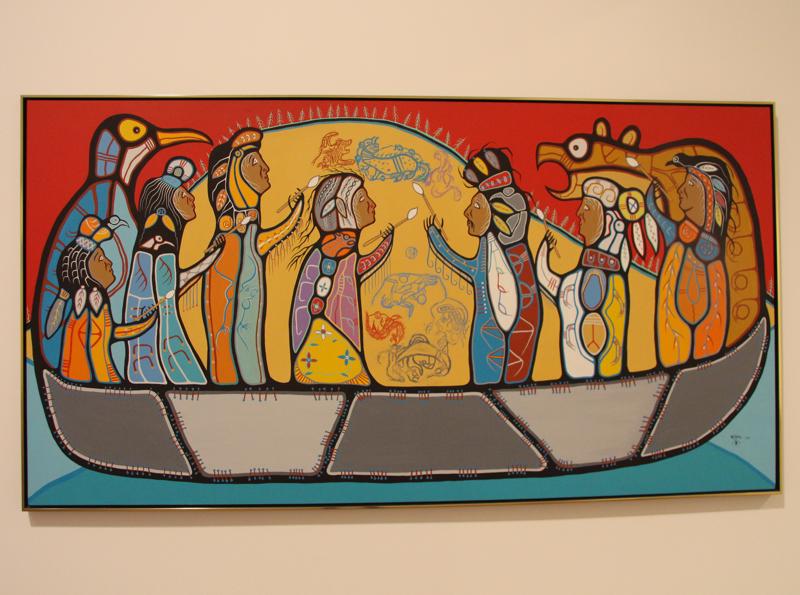
Sussex Drive entrance, and American artist Roxy Paine's stainless steel sculpture One Hundred Foot Line in Nepean Point behind the gallery.
The Canadian collection, the most comprehensive in Canada, holds works by Louis-Philippe Hébert, Tom Thomson, the Group of Seven, Emily Carr, Alex Colville, Jean-Paul Riopelle and Jack Bush.
The Gallery was under construction while we were there, so unfortunately 1/3 of the exhibits were closed during our visit. Still a spectacular place to visit.
Well we enjoyed every moment we spent here in Ottawa and have toured the city in it's entirety. Tomorrow we set off on a new adventure and travel to Montreal.
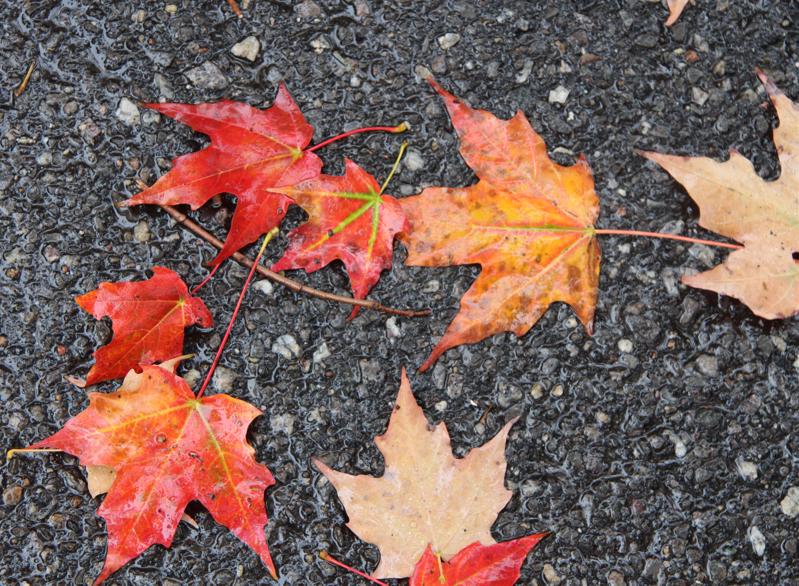
Get started right away!
What are you waiting for? Capture your adventures in a digital diary that you can share with friends and family. You can switch between any of your devices anytime. Get started in our online web application.
